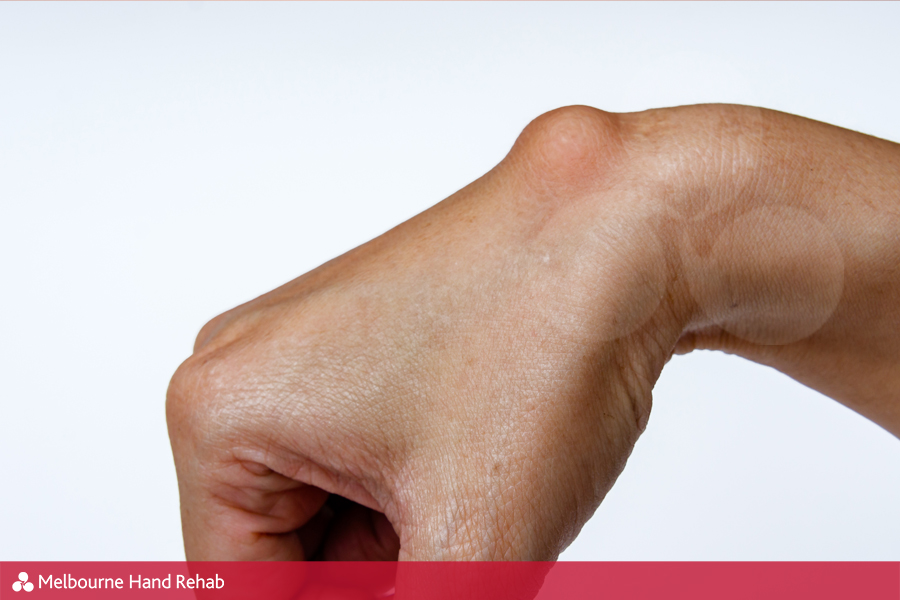
09 Jul What is a Ganglion?
Ganglion cysts are a common cause of wrist pain. Sometimes you can see a ganglion on your wrist. It usually looks like a small ball on your wrist.
Ultrasounds and MRI’s easily detect a ganglion when testing for it or testing for other injuries. On many occasions whilst seeing a patient for another injury, I have informed them that they have a ganglion. Often they are asymptomatic. While they are prevalent in wrists, they are not necessarily the cause of wrist pain.
What is a ganglion?
A ganglion cyst is a fluid-filled sac that most commonly develops on the dorsal or top of the wrist. Fluid leaks from the joint and develops in a sac or cyst. Volar or cysts on the bottom of the wrist are less common but do occur. Ganglions cysts are noncancerous and generally harmless. However, if the cyst becomes painful or interferes with hand movement or strength, further assessment is required.
Unfortunately, it is not clear why these occur. As a hand therapist, and having had a volar ganglion myself, I see ganglions commonly in people with flexible wrists. Women and people between the ages of 15-40 are the most common to have a ganglion.
What do I do about my ganglion?
A hand therapist is an excellent first step. Management is usually relatively simple. Often a wrist splint is recommended for night/sleep wear or possibly during work if you have pain with motion and work tasks. Flexion and extension positioning of the wrist during sleep can cause the ganglion to become bigger, or not allow it to reduce.
A splint will keep your wrist in a neutral position to avoid the flexion and extension position of the wrist. Most ganglions will reduce in size with time, but they can last for weeks to years. I personally had mine for 5 years. But now I no longer can see or feel it.
Do I need surgery?
You may hear about getting the ganglion aspirated, or having the fluid removed with a syringe. This is usually a temporary solution and the ganglion will come back. Cortisone or steroid injections are usually unsuccessful.
Surgical intervention is an option, although usually a last resort. Because the ganglion has a root that goes deep into the wrist joint, the surgery is more complicated than you may think. A cast or splint is worn after surgery for 2-4 weeks, and therapy for regaining motion, function, and strength.
Contact your hand therapist for assessment of motion, pain and strength for the best treatment recommendation for you.
Stephanie Konstantinidis, Masters of Occupational Therapy, Hand Therapy Practitioner, Melbourne Hand Rehab
If your pain continues to persist, don’t hesitate to get in touch. We’d love to help you.
BOOK AN APPOINTMENT
For more information, call us directly on 03 9458 5166



